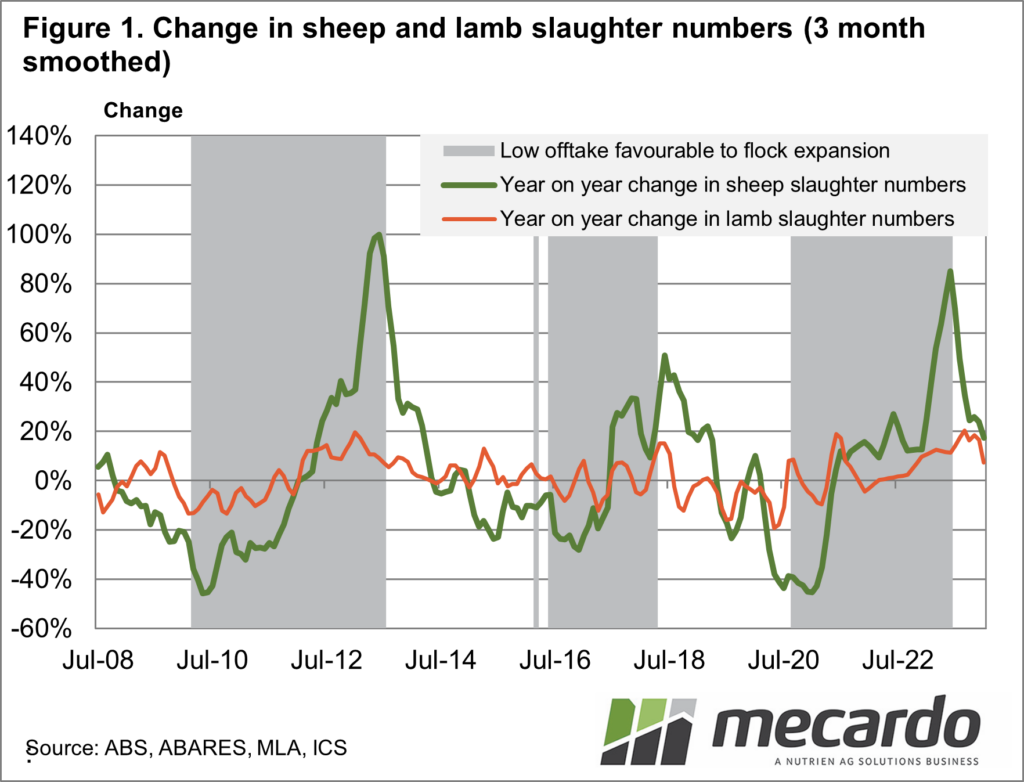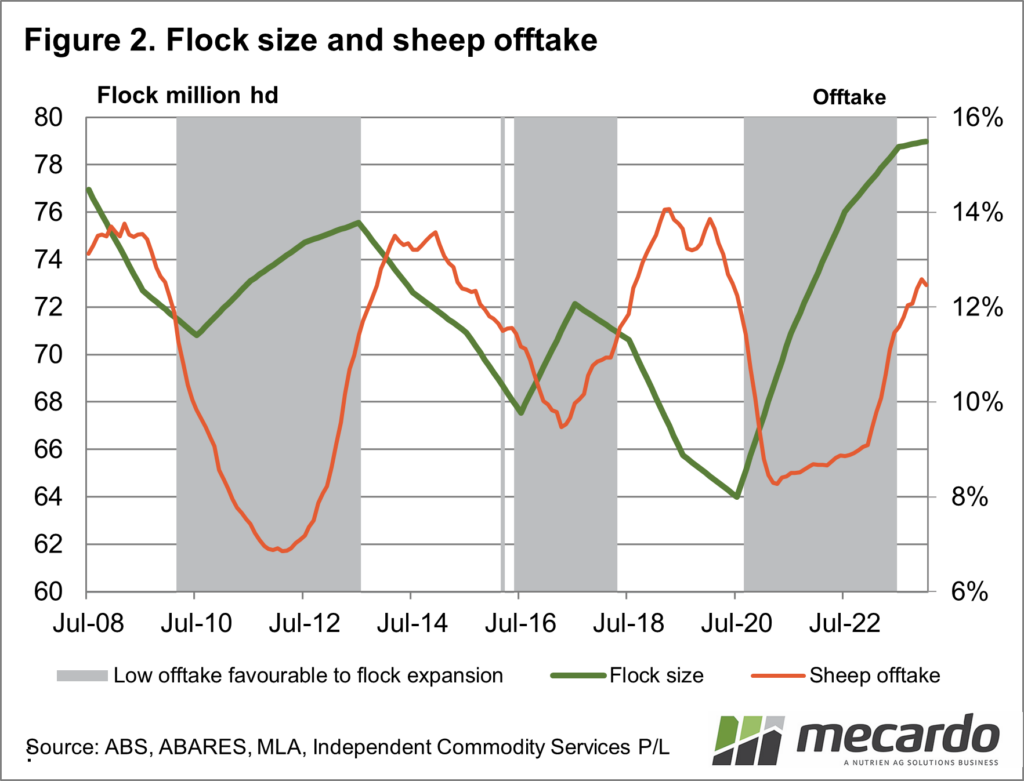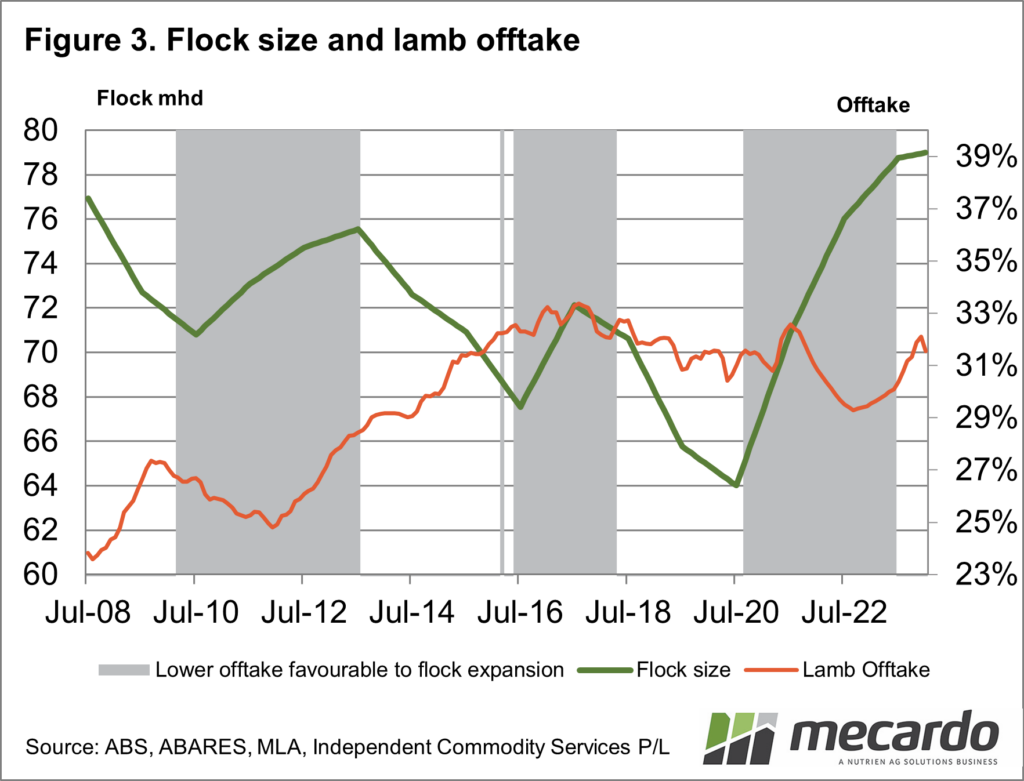Given the dramatic swings in seasonal conditions since mid-2023 in eastern Australia, it seems timely to check the sheep and lamb offtake levels to see what is happening to the flock size.
Mecardo last looked at the sheep and lamb offtake
in October (read here),
when seasonal conditions were not good and prospects were grim. Since then a
failure of the Australian spring has been avoided with far better than expected
rainfall over many of the eastern regions.
Commentary on the volume of sheep and lambs
sold often focuses on the absolute number or the year-on-year change. The
absolute number is of interest as there is a limit to slaughter capacity and
when farmers seek to sell more finished livestock than there is available slaughter
capacity, prices fall. The year-on-year change in slaughter numbers is also of
interest and Figure 1 shows the rolling change (three months smoothed) for
sheep and lambs slaughtered in Australia since 2008.
Grey regions in Figure 1 show periods of
flock expansion. The schematic shows clearly that sheep slaughter numbers are
more volatile than lamb slaughter numbers. The flock tends to begin expanding
when the change in the sheep slaughter has reached a minimum and finishes when
the change in the sheep slaughter reaches a maximum.
In Figure 2 the sheep slaughter number is
transformed into a percentage of the flock size, which gives it some
perspective and is termed the sheep offtake. The flock size is overlaid on
Figure 2 with the grey areas showing periods of flock expansion. The MLA flock
projection for 2024 is still set at a small increase, which is shown in the
schematic. The sheep offtake reached 12.6% in December which is around a
neutral level in terms of changes in the flock size, perhaps very slightly on
the contractionary side. Given the recent rainfall, it is likely the sheep
offtake will shrink in the coming months, so at this stage, a neutral setting
for the first quarter of 2024 appears likely.
Figure 3 shows a similar analysis for lamb
sales to abattoirs – the lamb offtake. After a period when the lamb offtake
dipped to below 30%, it has returned to levels consistent with the 2016-2020
period. In terms of the flock size, both the lamb and sheep offtake levels
appear about right, in that they are at sustainable levels.
What does it mean?
The rise in sheep and lamb slaughter numbers in 2023 looks to have settled down, with the sheep offtake at neutral levels and the lamb offtake back to 2016-2020 levels. From a flock size perspective, the prospect of a shrinking flock has been averted by late 2023/early 2024 rainfall in eastern Australia. At this stage, the flock size appears likely to be little changed in mid-2024 on mid-2023.
Have any questions or comments?
Key Points
- The sheep offtake reached 12.6% in December, below the peak levels of 2019, 2014, and 2009. It is still close to a neutral level in terms of change in the flock size.
- The lamb offtake has returned to its normal level of the 2016-2020 period, after the recent expansion in the Australian flock.
- Recent rainfall points to an easing of the sheep offtake which should keep it near neutral levels as we approach the Australian autumn.
Click on figure to expand
Click on figure to expand
Click on figure to expand
Data sources: ABS, ABARES, MLA, ICS, Mecardo















